Editor’s Note
When an aircraft takes off smoothly, performs all the manoeuvres properly and then makes a perfect three-pin landing, the pilot gets a pat on his back, and proudly enters it in his log book. No one cares to remember or even acknowledge the ‘behind the scenes’ effort of the maintenance technicians. Not many of us in India know that in the USA, they observe 24 May every year as the Aviation Maintenance Technician Day. It recognizes the efforts of aviation maintenance professionals as well as the achievements of Charles Edward Taylor, the man who built the engine used to power the airplane of the Wright Brothers. The date May 24 was selected to honour the birth date of Taylor. Our friend, Joseph Thomas who is currently in the US has sent in the following piece, and he has specifically requested that it be uploaded on the 24 May 2016.
*
AVIATION MAINTENANCE TECHNICIAN DAY
By Wing Commander (Veteran) J Thomas,VM
Introduction
24th May is Aviation Maintenance Technician Day. It honors an aviation pioneer, Charles E Taylor, who was the mechanic with the Wright Brothers. The Wrights were high school dropouts and Taylor was certainly not much more educated than that. The three of them developed :
-
The first wind tunnel
-
The first aircraft propeller
-
The first aero engine
-
The first roll control for aircraft
-
The first pitch control
All this was achieved with their meagre earnings from their bicycle shop. They beat the competition — Prof Langley who was funded with millions of dollars from the Smithsonian Institution. Each one of these developments is more important than the work done by many Nobel prize winners! Just proves my theory that mechanics are sometimes better than engineers. Given below is a brief account of the life and work of Charles Taylor.
*
CHARLES E. TAYLOR: THE MAN AVIATION HISTORY ALMOST FORGOT
In 2002 I visited the Wright Brothers National Memorial at Kill Devil Hills, North Carolina. Steady strong winds, a weather station nearby and a dream of flight brought Wilbur and Orville Wright to Kitty Hawk, North Carolina. After four years of scientific experimentation, they achieved the first successful airplane flights on December 17, 1903. With courage and perseverance, these self-taught engineers relied on teamwork and application of the scientific process.
The first flight on 17 Dec 1903 which covered 120 feet.
Wright Brothers National Memorial, Kitty Hawk, North Carolina
Marker of the Wright brothers’ first flight
At the museum at Kill Devil Hills / Kitty Hawk I was intrigued to read about the first aeroengine. There was a replica of that engine and a brief statement that the Wright Brothers entrusted their mechanic with producing it. They wanted 8 HP and their mechanic gave them an engine of 12 HP ! Wow ! 50 % additional power over the design target ? As a pilot and aeronautical engineer I know that even 1 % additional power is hard to get. Today’s best engineers, working with the latest computers, rarely hit the target. A century ago, a humble mechanic, working with two high school dropouts, produced the first aeroengine with 50 % excess power !
In the years since then, I did not come across any further details on this gifted mechanic. But I know full well that “genius is 1 % inspiration and 99 % perspiration.” So I never forgot the great man. At last, earlier this month, while reading the United Airlines inflight magazine, I came to know that the mechanic was Charles Taylor and his birthday on 24th May is celebrated as Aviation Maintenance Technician (AMT) Day. After that, the internet came to the rescue and I was able to research more about Charlie Taylor.
Charles Taylor built the first airplane engine by hand, and later he supervised engine construction at the Wright Company factory and worked to maintain record-setting Wright aircraft and engines. He was an integral part of the Wright brothers’ success and an important figure in aviation history.
Everyone knows about the Wright brothers, but “Charlie” Taylor, was almost lost in aviation history. Initially, Taylor was hired to make and repair bicycles, but increasingly took over running of the bicycle business as the Wright brothers spent more time on their aeronautical pursuits. By 1902, they trusted him enough to run the shop in their absence while they went to Kitty Hawk, North Carolina, to fly gliders.
After one of these trips, the brothers decided they needed more accurate aerodynamic data than was available, and they decided to build a small wind tunnel with a delicate force balance. With this, they would measure the amount and direction of air pressures on plane and curved surfaces operating at various angles and would improve their theories based on their gliding experiences.
Building the wind tunnel was the first aeronautics job that Charlie Taylor undertook for the Wright brothers. The wind tunnel was a rectangular box with a fan at one end driven by a natural gas engine. Charlie ground hacksaw blades and used them for balances in the tunnel. The Wright brothers conducted many experiments in their wind tunnel, and from this data, they began to make their 1902 glider, with Charlie machining many of the parts.
Through their experiments, the Wrights were able to accurately predict the horsepower – eight – that was needed to produce and achieve powered flight. The next problem was where to get a light engine that would produce eight horsepower. On Dec. 3, 1902, the Wrights sent letters to almost a dozen automobile companies and gasoline engine manufacturers asking if they could produce or modify an engine that would develop eight to nine brake horsepower, weigh no more than 180 pounds, and be free from vibration. The companies that replied said that they were too busy to undertake building such a special engine.
So the Wrights turned to Taylor for the job. He designed and built the aluminum water-cooled engine in only six weeks, based partly on rough sketches provided by the Wrights. It was a four-cylinder engine with a 4-inch stroke and a 4-inch bore. The cast aluminum block and crankcase weighed 152 pounds (69 kg) and were produced at either Miami Brass Foundry or the Buckeye Iron and Brass Works, near Dayton, Ohio. The Wrights wanted an engine with at least 8 horsepower (6.0 kW). The engine that Taylor built produced 12.
World’s First Aeroengine. Design targets were 8 HP with max weight of 180 pounds.
Taylor achieved 50 % extra power at the target weight.
Charlie started building the engine in the winter of 1902-03. Charlie or the Wrights would crudely sketch out each part on a piece of paper. After a thorough discussion about the drawing, Taylor would pin it above his workbench and go to work to complete it. Using these sketches and specifications, he finished the engine in 6 weeks – an amazing accomplishment.
Building the engine took a lot of ingenuity. It was mounted on a test stand and ran well, producing 8 horsepower at 670 rpm, 11 horsepower at 1,000 rpm and 12 horsepower at full rpm. The Wright brothers promptly added another 150 pounds to the airframe, allowing them to strengthen the wings and framework.
The Wright brothers designed and tested propellers in the wind tunnel and built several propellers that could be used for their first successful flight. Charlie’s engine drove two counter-rotating pusher propellers by means of chains.
On Dec. 17, 1903, after a run of about 40 feet at a groundspeed of approximately 8 mph and headwind of 27 mph, the first successful airplane to carry a human lifted off and flew 120 feet in 12 seconds. Orville and Wilbur Wright each flew twice that day, making successfully longer flights, until Wilbur’s 59-second flight, which covered 852 feet over the ground, ended in a soft crash. The same evening a storm destroyed the aircraft.
The Wrights went back to Dayton, Ohio where Charlie built a new, higher powered engine. This vastly improved the performance of the Wright Flyer and they were able to gain the interest of the U.S. Army. Demonstration flights started on Sept. 3, 1908. Orville flew and Charlie kept the aircraft in good flying condition.
On 17 Sep 1908 the airplane crashed, killing the Army observer, Lt. Selfridge, and badly injuring Orville Wright. Lt. Thomas Selfridge became the first casualty in a powered aircraft.
After the accident, Charlie investigated the crash scene and found that the new propellers that they installed before the flight had delaminated. Charlie reported his findings to Orville, who was in the hospital recovering from his injuries. He was thus the first person to investigate a powered fatal accident flight.
Charlie and Wilbur attach a canoe onto a new Flyer at Governor’s Island, New York
With the establishment of the Wright Company and the beginning of regular aircraft manufacture in 1910, Taylor became chief of the machine shop and head of the engine shop.
Taylor died on January 30, 1956, eight years to the day after Orville, his friend and employer. He is buried at the Portal of Folded Wings Shrine to Aviation in Burbank, California.
The FAA’s Charles Taylor Master Mechanic Award is named in his honor.
The Charles Taylor Aviation Maintenance Science Department at Embry-Riddle Aeronautical University is named for him.
Aviation Maintenance Technician Day is observed on May 24, Taylor’s birthday.
Further Reading : “My Story”, by Charles E. Taylor as told to Robert S. Ball, Air Line Pilot, First published in “Collier’s,” December 25, 1948.
http://www.aviationtoday.com/am/categories/military/615.html#.V0JXMEv5gds
Concluding Remarks by the Editor
Maintenance crews work behind the scene. They are remembered only when things go wrong. To that extent, they are always at the receiving end. I am told that Charles Taylor wanted to learn to fly the aircraft which he had built. But the Wright brothers discouraged him. They feared that he would become a celebrity and they would lose him. As things stand, no one knows anything about his life or work. The Americans have done a great honour to him by declaring 24 May as the “Aviation Maintenance Technician Day”. Through this act, they have recognized the value of the men perform the less glamorous task of preparing the flying machines for becoming airborne. There is a lesson in this for us in India!

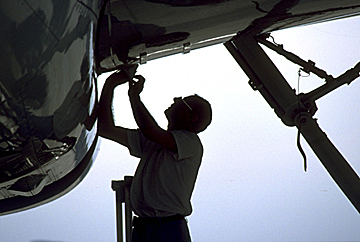
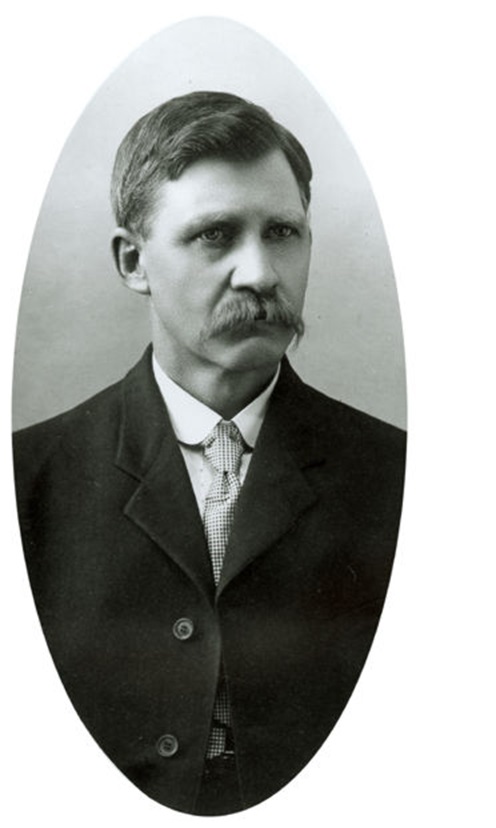
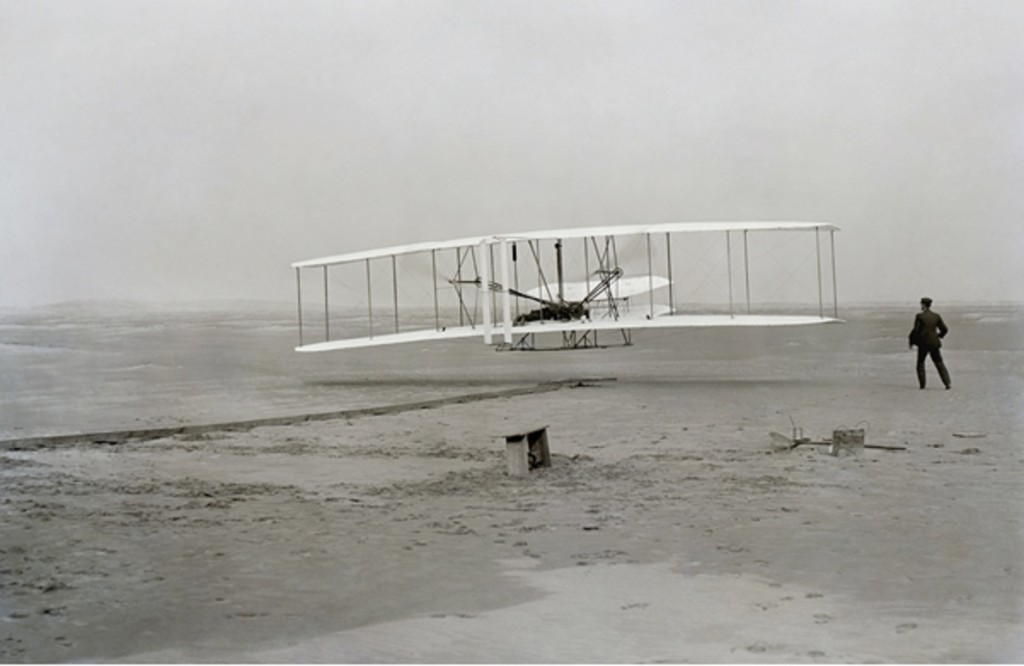
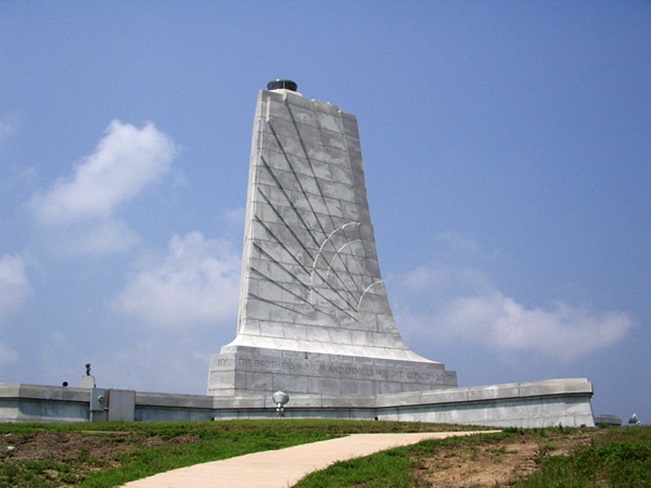
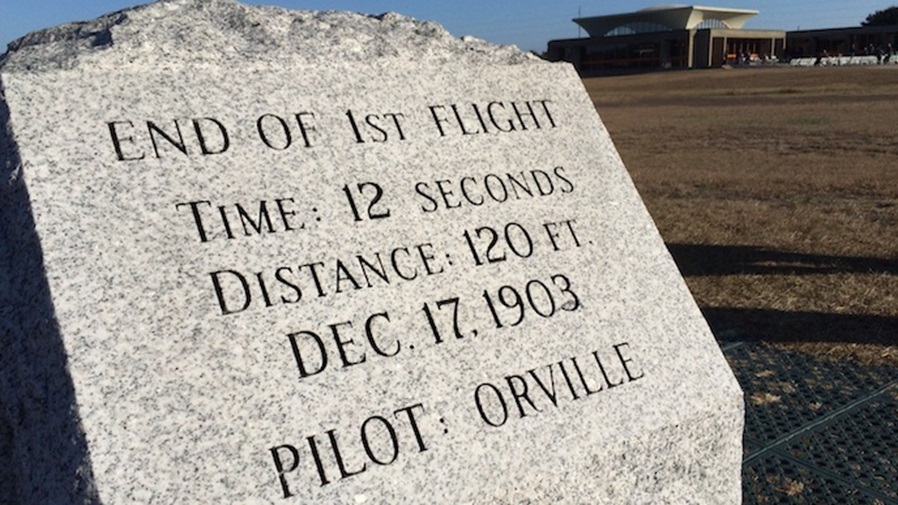
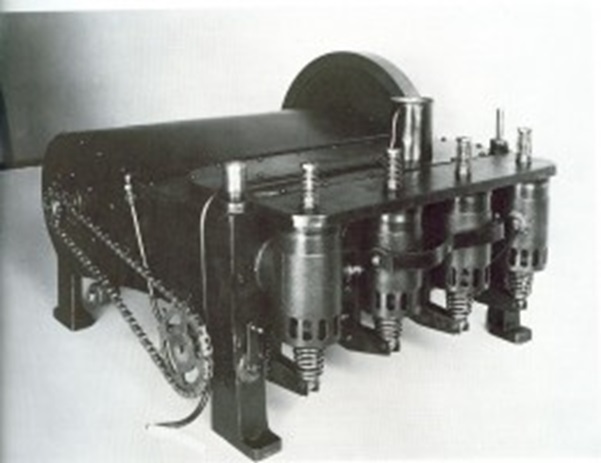
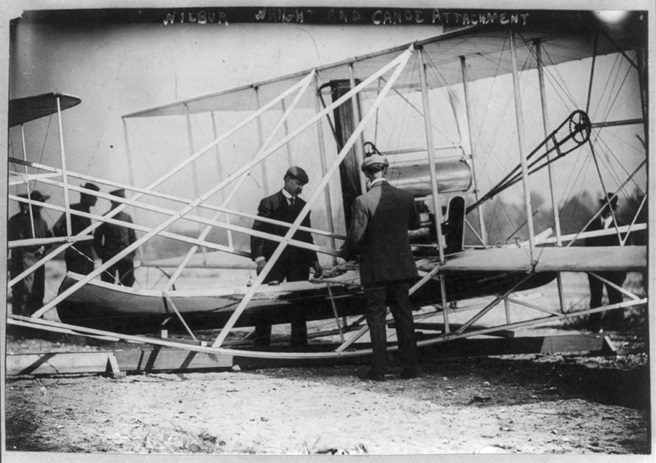
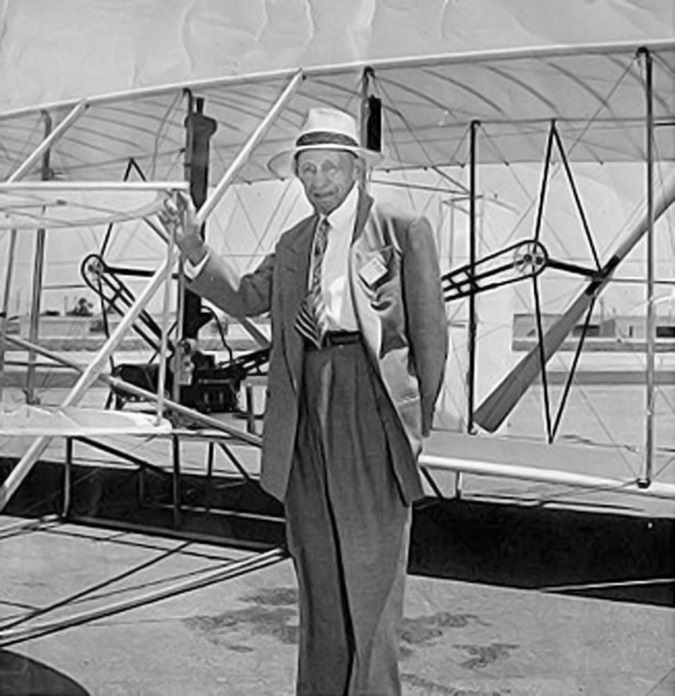





Dear Sir
Nice reading about the men behind the aviators and their flying machines.No one gives a thought for these skilled technicians who make flight safe for the rest of us.
Same can be said about marine engineers of which i am a member.We maintain ships machines in adverse and hostile weather.Both play their part
Jawahar Docca
Thomas sir,
Very interesting.
Thank you for sharing
Ravi
Thank you for the historical nuggets about Charles E Taylor (the man behind Wright Brothers’ success). Enjoyed reading his story.
My life was enriched and enlivened by many unsung heroes, the spanners, too many to list. Through the kaleidoscope, despite the fog of dementia, their smiling faces flash past daily. I salute these extraordinary men, whose dedication and professionalism kept me flying safe, to go touch a few monsoon low clouds and come right back, to do happy landings. I wish I had a self-inking rubber stamp to inscribe their names on the clouds that I could touch. Stamp the sky with their glory.
‘Happy Spanner’s Day’, to all of them.
Sir,
It certainly makes a very interesting reading.
I flew as an Air O P pilot from 1971 till I retired in 2000 ,with breaks in between to do my command and staff assignments.
Consequent to formation of Army Aviation Corps, our EME aviation technicians have learnt their job very well. We found them more dedicated and keen to learn.
I will forward this article to our current Aviation Maintenance bosses to incorporate an aviation maintenance technician day in our present Army Aviation Corps too.
Fond regards,
Brig. Surender Vashisht
9811506133
Dear Gen Surjit,
It certainly makes a very interesting reading.
I flew as an Air O P pilot from 1971 till I retired in 2000 ,with breaks in between to do my command and staff assignments.
Consequent to formation of Army Aviation Corps, our EME aviation technicians have learnt their job very well. We found them more dedicated and keen to learn.
I will forward this article to our current Aviation Maintenance bosses to incorporate an aviation maintenance technician day in our present Army Aviation Corps too.
Fond regards,
Brig. Surender Vashisht
9811506133
Going through the archives of this blog, I find that this is not the first time that Jo Thomas has picked out an ‘unsung hero’ I remember a detailed piece on Nain Singh many months ago.
I think that some day, some one will do a story on No. 3007 SCC J Thomas XIX Course, Hunter Squadron as one of the soldiers who deserves a much better place in the history of the Indian Armed Forces!
Surjit
Dear sir,
Its amazing to read this article. Once on one of my many visits to the Bhakra Nangal Dam I was most surprised when told that the Dam was designed and built by an undergraduate ( probably a school drop out).
Regards
Harvey Slocum (October 23, 1887 – November 11, 1961) was an American dam-building expert, known primarily for his part in the construction of Grand Coulee Dam in the United States and the Bhakra Dam in India.
Slocum started out as a labourer in a steel mill and rose to the position of construction superintendent of the Grand Coulee Dam.
Slocum joined the Bhakra Dam construction project as chief engineer in 1952 and imprinted on it his own distinctive style of working.
Slocum died in New Delhi at age 74
Dear sir,
Its amazing to read this article. Once on one of my many visits to the Bhakra Nangal Dam I was most surprised when told that the Dam was designed and built by an undergraduate ( probably a school drop out).
Regards
My father, Amrik Singh was a BA gradute from Punjab University. Though he was from the non science stream, he was able to join INA ( later Indan Airlines) as a mechanic in the 1940′s. Through the years he maintained Dakotas,Vikings, Viscounts & Boeings. He rose in the ranks to retire as Deputy Chief Engineer Maintenance for IA. On retiring he did a stint with Yemen Airlines before hanging up his shoes.
Now a days, can a Non Science stream person ever take up maintenance of any machine?
Dear GS,
Yes. I recall seeing his picture in your house. You were justifiably proud of his achievements.
As for paper degrees, they only help the mediocre in climbing up. The talented and the gifted persons do not need M Techs and PhDs!
This is true of fine arts also. Kishor Kumar had received no formal training in music. And yet, some of his songs are absolutely unforgettable.
While on this subject, I am tempted recount a little story about the ‘credit’ given to the artistes for film songs. To begin with there were no ‘playback’ singers. The actors sang their own songs. And on those 78 RP record discs you see the name of the actor only. Later, when Lata Mangeshkar appeared on the scene, she suggested that for every song, the names of the singer, music director and the lyricist be written. And this reform improved the quality of the songs churned out by Bollywood.
Surjit
Tommy Sir, just like you to throw light on some of aviation history’s most endearing moments and personalities – and so very timely. Last year I read a most absorbing biography of the Wright Brothers , by David McCulough (published in GB by Simon & Schuster 1915). Charles Taylor appears larger than life along with the Brothers, for a good part of the book. I never got the feeling that his role was not recognized. The AMT Day being on 24th May in the US is indeed capital news. Thnks again.
Thanks Kalyan. There is still a lot of controversy regarding the Wright Bros.
“In the USA, they went on to exert such a malign influence on their homeland’s aviation that the country that invented the aeroplane was forced to buy British and French aircraft when it entered the First World War a decade later, because its own were so far behind in technology. The Wrights, their business partners and their lawyers were responsible for this squandered legacy.”
Read more at:
http://truthinaviationhistory.blogspot.com/2014/07/dr-george-spratt-letter-and-lost-friend.html
Of course, Charlie Taylor had nothing to do with all this.
Having spent nearly 3 decades in Air OP and Army Aviation, I always admired the contribution of Aviation Technical Officers and Technicians from the time I earned Wings. Just to appreciate the intricacies of Aircraft Maintenance, I spent my majority of Off Flying Duties, with the Technicians undertaking various types of Servicing Schedules….the knowledge that I gained soiling my hands with Grease & Lubricants, made me a more confident Aviator. I always saluted the Maintenance Staff and never thought that the Thumbs Up, before taxying out is the only relationship between the Aircrew and the Maintenance Crew.
So encouraging to know about US Aviation Maintenance Technician Day!
Thank you Gen Surjit & Wg Cdr Thomas Sirs!
Result oriented approach is an important ingredient of any success.
Thanks a lot
I agree with you General Surjit, it is not necessary to be a topper to be creative. I myself had topped in my course at College of Aeronautics, Cranfield UK (now Cranfield university) but a welsh student with third division marks had done much better than all of us in his project work. Unfortunately, creativity is not encouraged in our schools/colleges in India, at least it was not, when I was a student.
Regards
Veteran AVM RP Mishra
Dear Air Marshal Mishra,
During my forty odd years of service, the task which I found the most daunting was the one connected with ‘evaluating’ the performance of my younger colleagues. When we completed major projects, it was always a team effort. and yet the system demanded that we were required to recommend only one or two persons for the coveted medals.
During wars I found that the soldiers who ended up with ‘chakra’ awards were in effect a part of the unit. Imagine some ended up with MVCs (or even PVC) while his comrade who was fighting shoulder to shoulder with him was not even ‘mentioned-in-despatches’ !
The unsung soldiers fade away, until someone like Thomas digs out their story.
It is my belief that ALL major inventions and discoveries are the result of the effort of several persons. We give credit to a few, who are the noisiest amongst them.
Surjit
Thanks as usual your course mate is brilliant !
Thank you for sharing, sir. This is a very noble thought..
regards
Harikumar
Dear General,
This is very interesting ! Till about the late 1970s if one went through a ACC Ltd. or Tatas Annual Report—-there was a detailed listing of every single employee from top to bottom—-if you read the qualifications of some of the senior ones—-it would say Senior Cambridge or some basic education pass. These were the guys who were responsible for bringing up these multi-nationals to the present level ! The high flyers with great qualifications are only there now after all the hard work was already done several years ago & the organisation put on a firm footing by the not so highly qualified guys !
You must have experienced the same thing in your own Corps of EME—-there was always an highly experienced radio mech or vehicle mech JCO or OR with very basic qualification & he was an highly respected person in the unit !
Fond regards,
Zal Kabraji.
There is no argument over the fact that the engineer or mechanic is the man behind the aircraft. In every squadron there was always that one Sargeant or Corporal who knew his aircraft like the palm of his hand. He would sort out any snag no matter what the complication. The aviation fraternity in the US has done full justice by giving Charles Taylor the honour he deserved. And thank you Tommy for sharing this very interesting and informative story.
‘The unsung heroes’ are the engineers, more so the Aircraft Maintenance Engineers.
Imagine yourself borrowing a car from your friend to undertake some urgent work. When the keys are handed over to you, the questions invariably asked are: is there enough fuel, is spare tire there in the dickey, are tools there, is there any peculiarity of the car in starting or otherwise and the like.
However when a pilot comes to the aircraft for a sortie, he just gets inside, gets strapped,closes the canopy and taxies out. In my 25 years of experience, never ever has any pilot asked me any of such questions… knowing fully well that if anything goes wrong in the air, he might not be able to land back. Such is the trust and faith ‘aeronautical maintenance engineer’ has built for themselves.
Yet they are often at the receiving end when the aircraft is not put on the flight-line at the designated hour, due to snag rectification.
All said and done it is a nice profession that offers plenty to learn.
An Aircraft Maintenance Engineer
Such
Great read, thank you,Sir.
My take is good CO,s and superiors acknowledge back office work. The poor ones appropriate the credit.It is not necessary to be brilliant to solve day to day problems bur it helps to have a sound knowledge of basics when the chips are down.
Everybody cannot be a test pilot, astronaut or ICS but all jobs provide the challenge
to perfect ourselves.
Highly inspiring story about an unsung hero, atleast US has recognised his contribution and 24/5 is observed as ‘aviation maintenance technician day’ in his memory and honour, while in our country we donot even have a war memorial …..leave alone other things….mere bharath mahaan…
Thank you sir for sharing wonderful story.
Thanks. Regarding war memorial, please see http://anubimb.com/largesttallest-indian-flag-national-military-memorial-bangalore/
Thank you Joe for introducing Charles E Taylor to us on The Aviation Technicians Maintenance Day.
An inspiring story.
I agree with you General Surjit, it is not necessary to be a topper to be creative. I myself had topped in my course at College of Aeronautics, Cranfield UK (now Cranfield university) but a welsh student with third division marks had done much better than all of us in his project work. Unfortunately, creativity is not encouraged in our schools/colleges in India, at least it was not, when I was a student.
Topical theme at a time when there is a pay-related tug of war between generalists and specialists- the latter are asserting their claim to equivalence. The generalist/command oriented mindset is a legacy which the military (and civil) services in India are unable to overcome. And social attractiveness/prestige quotient is somehow linked to pay-grades.
I totally agree with the message of this brilliant post- my compliments to Wingco Thomas and Gen Surjit.
General Sahib, as always a very interesting read. I am not surprised having run major tea manufacturing factories with mechanics, many without even formal education. They are inspired and know their machines so well that the machine talks to them. In Guyana, we had a Mines Manager (ex-mechanic without any education) who used to taste ore and tell you the %age of alumina in it. I recall my good friend Anupinder Singh Randhawa’s father who was not a mechanic but an aeronautical engineer who used to be in Avro maintenance for Indian Airlines. Later he worked on other planes like the Caravelle and the Boeing 737 when they came. It is these people who keep those planes flying and whose contribution is often not even known. Many thanks once again for this writeup.
Thank you very much, Gen. Surjit Singh, Sir, for sharing this amazing story from your friend Joseph Thomas.
Engineers per say, do a thankless job !! Be it Marine, Air, Mechanical, Civil or Electrical. Taylor’s story has proved it once again.
It is said,that:
- A doctor’s mistake is buried;
- A Lawyer’s mistake is hanged
But an engineer’s mistake remains for ages for the world to see and say,”what a fool was he.”
KPG,
That was a nice quip in the end!
In the engineering circles we say,
_ An electronics engineer’s mistake is found out at once
_ A mechanical engineering error shows up in a few weeks
_ When a civil engineer makes a faulty bridge or a dam, it takes decades to show up!
Surjit